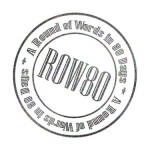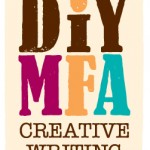One of my favorite things to do is going on a writing date. Sometimes I go alone, sometimes I’ll meet up with a fellow writer and we’ll sit and write side-by-side for a while. Over the past few years that I’ve been doing this, I’ve learned that there’s a certain code for writing out. Here’s what I’ve learned:
1) If you’re writing in a cafe or restaurant, try to avoid rush hours. Chances are, the lunch rush at your favorite cafe will be busy and noisy and not conducive to writing. If you go during an off-hour, like between meals, not only are you likely to get more writing done because it won’t be as hectic, but you also won’t tick off the staff by taking up a table just to sip coffee and write.
2) If it’s a cafe with table service, order food and leave a good tip. This is especially important if you want to become a regular and come back again to write. Once you’ve established that you’re not just there to take up space and that you’re a good tipper, the waitstaff is more likely to give you some perks, like a regular table or even the occasional freebie.
3) Know when it’s time to say goodbye to a writing spot. If your favorite, best-kept-secret spot suddenly becomes THE place to be, then it’s time to find a new writing locale. There’s this amazing little tea shop near me where I used to go to write and draw in my sketchbook. It used to be so quiet that I could sit there for two hours and just order a pot of tea (and sometimes they’d even give me a scone on the house!) Then this place got super-popular and now good luck getting a table for lunch or tea, much less a spot to sit and write.
At the risk of these places getting uber-popular and being overrun with writers, let me share some of my writing spots in NYC:
• Shakespeare Garden in Central Park (that’s where the photos come from – it’s near the Great Lawn, toward the SW end, and near-ish the 81st West Side entrance to the park.) This beautiful, quiet garden is great for writing or just sitting and contemplating life.
• s’Nice on 8th Ave, just south of 14th St. or in Brooklyn (5th Ave btwn 2nd and 3rd St.) Yummy sandwiches and salads. They’re sort of sticklers about not using laptops on certain tables but if you sit at the communal table it’s no problem.
• The Atrium at Lincoln Center (Broadway between 62nd and 63rd St.) Free wifi! Also the space is completely free and open to the public. And some Saturdays they even have free live classical music.
• Le Pain Quotidien a Belgian bistro that has branches all over the city. My favorite one is the Lincoln Center space on 65th between Broadway and CPW. They get a bit mobbed with the lunch crowd but later in the afternoon it quiets down and is a great place to sit and work.
Do you have a favorite spot to “write out”? What about the “writing out” code… do you have any additional tips to share?
















 Call me Gabi (pronounced gah-BEE). I'm a writer, freelance teacher, and a lover of books and words. I'm also the instigator of DIY MFA. iggi's my sidekick, but he thinks he's the brains behind this operation.
Call me Gabi (pronounced gah-BEE). I'm a writer, freelance teacher, and a lover of books and words. I'm also the instigator of DIY MFA. iggi's my sidekick, but he thinks he's the brains behind this operation.
 ROW80 Check-In (2)
ROW80 Check-In (2) YA Cafe: Villains and Antagonists
YA Cafe: Villains and Antagonists Introducing Writer Fuel
Introducing Writer Fuel ROW80 Check-In (1)
ROW80 Check-In (1)